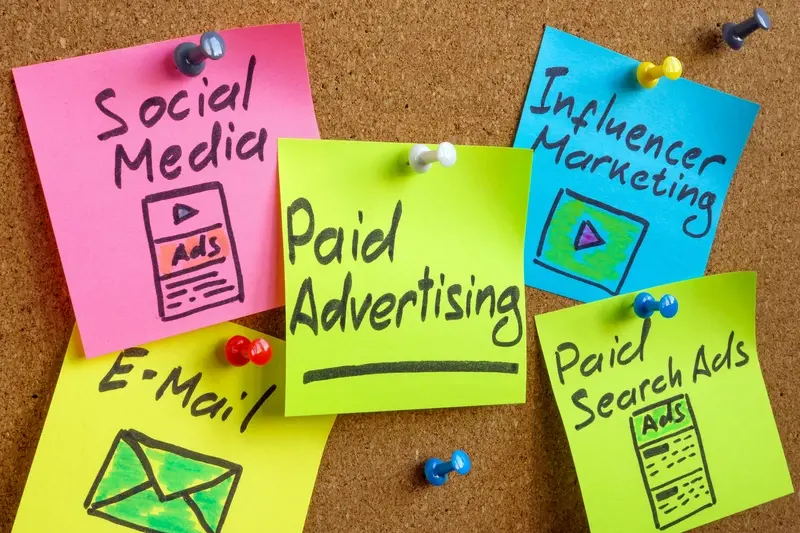How Often Should I Publish Content To Promote My App?
Most mobile app developers think they need to post content every single day to stay relevant. They're wrong. The most successful apps I've worked with over the years follow a simple rule: consistency beats frequency every time. It's not about flooding your audience with endless posts—it's about finding the right rhythm that works for your specific mobile app and sticking to it.
The truth is, there's no magic number when it comes to content publishing. A fitness app might thrive with daily workout tips, whilst a complex business tool might do better with weekly in-depth tutorials. What matters is understanding your users, your resources, and your goals. That's where having a proper content calendar becomes your best friend.
The best publishing strategy is the one you can actually maintain without burning out your team or boring your audience
Building an effective publishing strategy isn't just about picking random dates on a calendar. It's about understanding your app's unique content needs, knowing what platforms work best for your audience, and creating a sustainable rhythm that supports your app's growth. Throughout this guide, we'll explore how to create a content calendar that actually works for your mobile app, avoid the common mistakes that trip up most developers, and build a publishing strategy that grows with your app over time.
Understanding Your App's Content Needs
Right, let's get one thing straight from the start—not every app needs the same content approach. I've worked with fitness apps that posted daily workout tips and banking apps that shared content once a week. Both were successful, but for completely different reasons.
Your app's content needs depend on what your users actually want from you. A meditation app might share calming quotes every morning because that's when people need them most. A weather app? Well, they don't need to post motivational content about rain, do they?
What Your Users Really Want
Before you start planning your content schedule, you need to understand what your audience expects. Are they looking for entertainment, education, or just reminders that your app exists? The answer shapes everything else.
- Gaming apps often need frequent, exciting content to keep players engaged
- Productivity apps work better with weekly tips and feature updates
- Shopping apps can focus on seasonal promotions and product highlights
- Health apps benefit from daily encouragement and educational content
Your Resources Matter Too
Here's the thing nobody talks about enough—your content frequency should match what you can actually deliver. I've seen too many app developers burn out trying to post daily content when they only had time for weekly updates. It's better to publish quality content consistently than to post rubbish just to fill a schedule.
Think about your team size, budget, and time constraints. Be realistic about what you can maintain long-term without sacrificing quality.
Building a Content Calendar That Works
Right, let's talk about content calendars—and I mean proper ones that actually get used, not those fancy spreadsheets that look impressive but gather digital dust after week two. I've worked with countless app developers over the years, and the ones who succeed with their content aren't necessarily the most creative; they're the most organised.
A content calendar for your mobile app isn't rocket science, but it does need structure. Start by mapping out your key dates—app updates, feature releases, seasonal events that matter to your users. Then work backwards from there. If you're launching a new feature in March, you'll want to start teasing it in February, maybe share some behind-the-scenes content in January.
What Your Calendar Should Include
Your publishing strategy needs these core elements tracked somewhere everyone can see them:
- Publication date and time
- Platform (Instagram, blog, TikTok, etc.)
- Content type and format
- Target audience segment
- Key message or goal
- Status (draft, approved, published)
Plan your content in batches of 2-3 weeks rather than months ahead. Mobile app trends move fast, and you'll want flexibility to jump on relevant topics or respond to user feedback quickly.
The best content calendars aren't perfect—they're practical. Use whatever tool your team will actually check daily, whether that's Notion, Trello, or even a shared Google Sheet. What matters is consistency, not complexity.
Different Types of Content for Different Platforms
After years of helping clients promote their apps across various platforms, I've learnt that what works on Instagram won't necessarily work on LinkedIn—and that's perfectly fine! Each platform has its own personality and audience expectations, which means your content needs to adapt accordingly.
Let's start with the visual platforms. Instagram and TikTok love short, snappy videos showing your app in action. Screen recordings of key features work brilliantly here, especially when you add captions or voiceovers explaining what's happening. Don't overthink it—people want to see real functionality, not Hollywood-level production values.
Platform-Specific Content Types
- Instagram: Behind-the-scenes stories, feature highlights, user-generated content
- TikTok: Quick tutorials, trending challenges using your app, before/after transformations
- LinkedIn: Industry insights, case studies, professional success stories
- Twitter: News updates, customer support, quick tips and tricks
- YouTube: In-depth tutorials, app walkthroughs, developer interviews
LinkedIn requires a more professional approach—think case studies about how your app solves business problems or industry insights that position you as an expert. Twitter works best for quick updates, customer support interactions, and joining relevant conversations in your niche.
The key is matching your content format to each platform's strengths rather than trying to force the same content everywhere. For more guidance on what type of content to create, consider how different formats serve different purposes. Your audience will thank you for it!
Finding Your Publishing Rhythm
After years of working with mobile app developers, I've noticed something interesting—most people think there's a magic number for how often they should publish content. They want me to tell them "post three times a week" or "daily content is best" but the truth is much more nuanced than that. Your publishing rhythm isn't about following someone else's schedule; it's about finding what works for your mobile app and your audience.
The best publishing strategy I've seen starts with consistency rather than frequency. Better to publish one quality piece of content every week without fail than to post daily for two weeks and then disappear for a month. Your content calendar should reflect what you can realistically maintain—not what you think you should be doing.
Quality Beats Quantity Every Time
I've watched apps gain massive followings with just two posts per week, whilst others struggle despite posting multiple times daily. The difference? The successful ones focused on creating content their users actually wanted to see.
The moment you start publishing content just to fill your content calendar is the moment you've lost sight of your users' needs
Start small and build up gradually. Test different frequencies and watch how your audience responds. Understanding the difference between successful and mediocre apps often comes down to this attention to user needs. Your publishing rhythm should feel sustainable for your team and valuable for your users—everything else is just noise.
Measuring What Works and What Doesn't
Right, let's talk about the bit that most people completely skip—actually checking if your content is working. I've watched countless app developers publish content week after week without ever looking at the numbers. It's like throwing darts blindfolded and hoping for the best!
The good news is that measuring your content performance doesn't require a degree in data science. Most platforms give you the basics for free, and that's honestly all you need to start with.
Key Metrics That Actually Matter
Don't get overwhelmed by vanity metrics like total follower count—focus on what drives real results for your app:
- App store visits from your content
- Download conversion rates
- Engagement rates (likes, comments, shares)
- Click-through rates on your links
- Time spent viewing your content
Making Sense of Your Data
Look for patterns rather than getting caught up in daily fluctuations. That Tuesday post that got loads of engagement? What made it different? Was it the timing, the topic, or the format? Start keeping notes about what works and what falls flat.
Most importantly, don't be afraid to kill content that isn't working. If your weekly blog posts aren't driving downloads but your Instagram stories are bringing in users, shift your focus accordingly. The data will tell you exactly where to spend your time.
Common Content Publishing Mistakes
After helping dozens of mobile app developers with their publishing strategy over the years, I've noticed the same mistakes cropping up time and time again. The most common one? Posting everything everywhere all at once. I get it—you want maximum reach for your mobile app—but this approach usually backfires spectacularly.
Publishing identical content across every platform without adapting it is like wearing a business suit to the beach. Each platform has its own culture and expectations, so your content calendar needs to reflect that. What works brilliantly on LinkedIn might fall completely flat on TikTok.
Quality Over Quantity Every Time
Another mistake I see constantly is prioritising frequency over quality. Yes, consistency matters for your publishing strategy, but churning out mediocre content just to hit daily quotas will damage your app's reputation. People would rather see two brilliant posts per week than seven forgettable ones.
Track your engagement rates religiously—if they're dropping, you're probably posting too much or your content quality is slipping.
Ignoring Your Audience's Feedback
The biggest mistake of all? Not listening to your audience. Comments, shares, and download spikes are telling you exactly what content resonates. Your content calendar should evolve based on this feedback, not remain stubbornly fixed to your original plan.
Adapting Your Strategy Over Time
Your content strategy isn't set in stone—and that's a good thing! I've watched countless app owners stick rigidly to their original publishing schedule, even when it clearly wasn't working. The best performing apps I've worked with treat their content strategy like a living document that evolves with their audience and market changes.
Start by reviewing your content performance every month. Look at which posts drove the most downloads, engagement, and user retention. You might discover that your Thursday afternoon posts consistently outperform Monday morning ones, or that video content works better than static images for your particular audience. Don't be afraid to shift your publishing frequency based on what the data tells you.
Signs It's Time to Adjust Your Strategy
Watch out for these warning signals that suggest your current approach needs tweaking:
- Engagement rates dropping consistently over several weeks
- Your content creation team feeling overwhelmed or burnt out
- Competitor apps gaining traction with different content approaches
- Major platform algorithm changes affecting your reach
- Seasonal shifts in your app's usage patterns
Remember, adapting doesn't mean completely scrapping what you've built. Sometimes small tweaks—like changing your posting time or adjusting your content mix—can make a significant difference to your app's promotional success.
Conclusion
After working with hundreds of mobile app developers over the years, I can tell you that most people overthink their content publishing strategy. They get caught up in perfect posting schedules and fancy content calendars when what really matters is consistency and quality. Your app doesn't need you to post every single day—it needs you to show up regularly with content that actually helps your users.
The sweet spot for most apps sits somewhere between 2-4 posts per week across all platforms combined. That might mean one blog post, two social media updates, and a weekly newsletter. Or it could be three Instagram posts and one YouTube video. The exact mix depends on where your audience hangs out and what type of content they respond to best.
Building a content calendar isn't about being rigid—it's about being prepared. When you plan ahead, you can spot gaps, balance different content types, and avoid that last-minute scramble for ideas. But don't let the calendar become a prison; if something timely comes up or a piece of content isn't working, change it.
Remember, your publishing strategy will evolve as your app grows. What works for a brand new app won't necessarily work for an established one with thousands of users. Keep measuring, keep testing, and keep adapting. Your audience will tell you what they want if you're listening.
Share this
Subscribe To Our Learning Centre
You May Also Like
These Related Guides

Should I Run Paid Social Media Ads For My App Or Stick To Organic Posts?

What Are the Best Times to Post About My App on Social Media?



